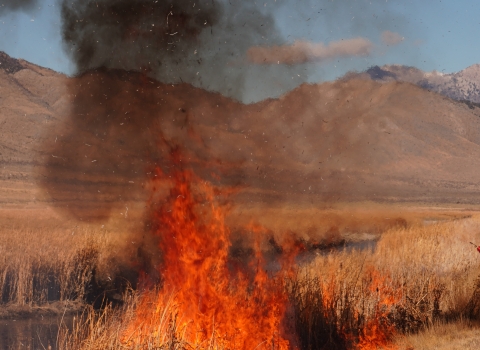The U.S. Fish and Wildlife Service (Service) is seeking public comment on a proposed rule to list the Egyptian tortoise, a terrestrial reptile from Libya, Egypt and Israel, as threatened under the Endangered Species Act (ESA). The Service is also proposing a 4(d) rule to provide further conservation safeguards for the species.
The ESA provides numerous benefits to foreign species, primarily by prohibiting activities such as import, export, take, interstate and foreign commerce. By regulating these activities, the United States can help conserve and recover this iconic tortoise for future generations.
The Egyptian tortoise is the only dwarf tortoise occurring in the northern hemisphere. It is the smallest and least-known tortoise species inhabiting the Mediterranean basin and the second smallest species of tortoise in the world.
The species was historically found on both sides of the Nile River in Libya, Egypt and the western Negev Desert in Israel. Currently, the species resides in a narrow coastal zone in Libya and east of the Nile River in North Sanai, Egypt and Israel. The Service estimates that there are only 11,000 Egyptian tortoises left in the wild.
Primary threats to the species include habitat loss and degradation, climate change climate change
Climate change includes both global warming driven by human-induced emissions of greenhouse gases and the resulting large-scale shifts in weather patterns. Though there have been previous periods of climatic change, since the mid-20th century humans have had an unprecedented impact on Earth's climate system and caused change on a global scale.
Learn more about climate change and collection for the pet trade. Over the past 60 years, the Egyptian tortoise population has plummeted by approximately 90 percent and the species has lost 80 to 90 percent of its historical range.
Section 4(d) of the ESA allows the Service to issue regulations that are necessary to conserve imperiled species. Accordingly, the Service is proposing a 4(d) rule for the Egyptian tortoise that would prohibit import, export, take, possession and other acts associated with the commercial trade of the species.
The proposed rule would provide an exception for interstate commerce from public institutions to other public institutions, specifically museums, zoological parks and scientific institutions. The agency may also issue permits to carry out otherwise prohibited activities, such as scientific research or projects that enhance the survival of the species in the wild.
The Egyptian tortoise was listed under Appendix I of the Convention on International Trade in Endangered Species of Wild Fauna and Flora (CITES) in 1995. On June 9, 2014, Friends of Animals petitioned the Service to list the Egyptian tortoise as threatened or endangered under the ESA. On April 10, 2015, the Service published a 90-day finding that found that listing might be warranted.
The Egyptian tortoise is mostly found in desert and semi-desert areas, shoreline grasses at the edges of salt lakes or salt marshes and areas of scrub thorn in a narrow coastal zone in North Africa and Israel in the southeast Mediterranean. The species prefers areas with sandy soils, dunes, fair coverage from bushes and small shrubs and solidified sands with denser plant cover. Thermal buffering from shrubs and both annual and perennial plants to eat are essential for the species’ long-term survival.
The most distinguishing characteristic of the Egyptian tortoise is its remarkably small size. Females are generally a bit larger than males. They usually have a carapace length over 4.33 inches and weigh approximately 10.6-12.4 ounces. Male’s carapace length is between 3.54-3.93 inches and they weigh approximately 5.6-8.8 ounces.
The proposed rule to list the Egyptian tortoise as threatened under the ESA will publish in the Federal Register on November 9, 2021, opening a 60-day public comment period. The Service will consider comments from all interested parties received by January 10, 2022. Information on how to submit comments is available at www.regulations.gov by searching under docket number FWS–HQ–ES–2020–0114.
The public may also submit comments by U.S. mail to:
Public Comments Processing
Attn: FWS–HQ–ES–2020–0114
U.S. Fish and Wildlife Service, MS: PRB/3W
5275 Leesburg Pike
Falls Church, VA 22041–3803
Please send comments only by the methods described above. The Service will post all comments on http://www.regulations.gov. This generally means that the agency will post any personal information that is provided.
To learn more about the Service’s Branch of Foreign Species, visit: https://www.fws.gov/endangered/what-we-do/foreign-species.html.



